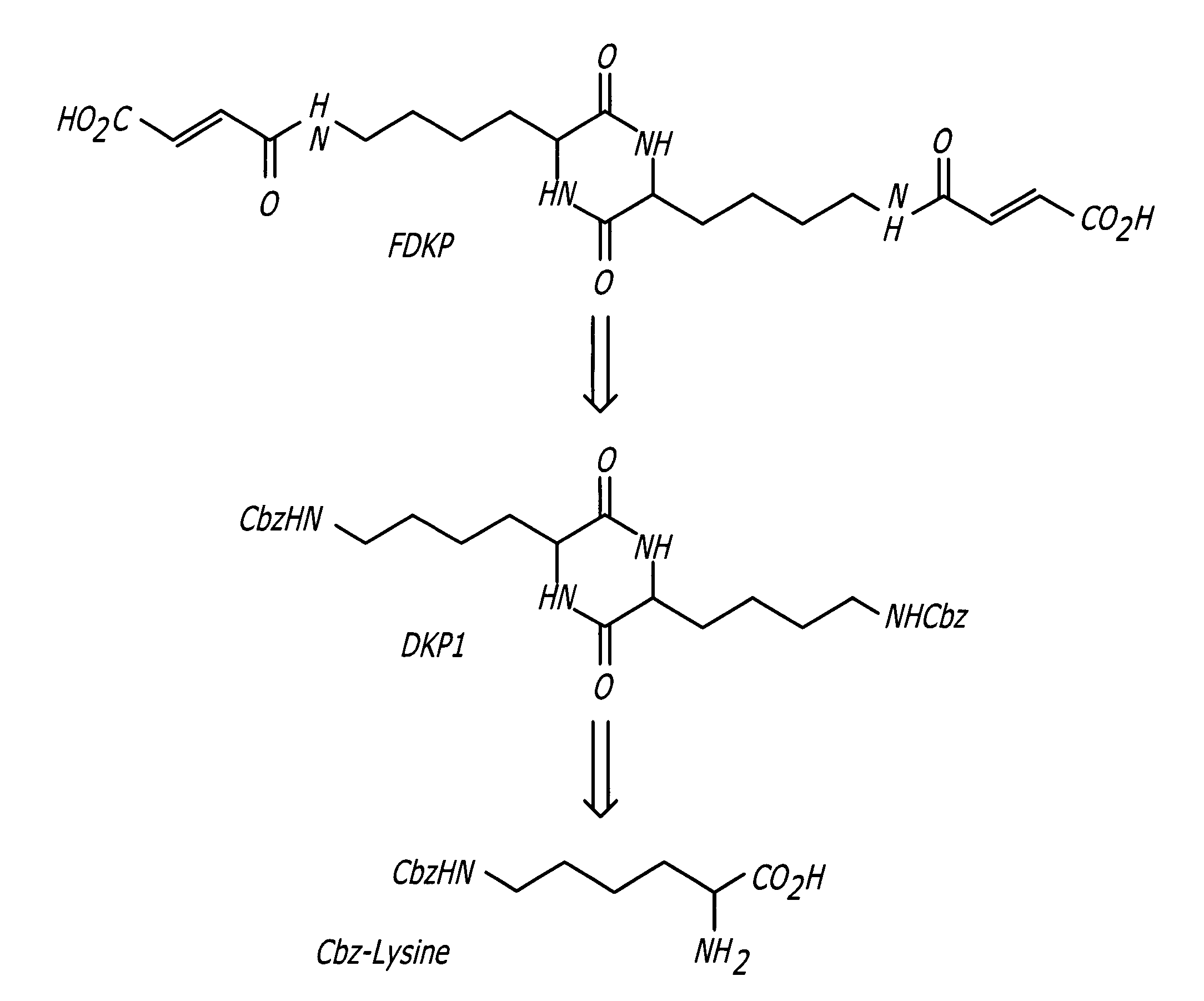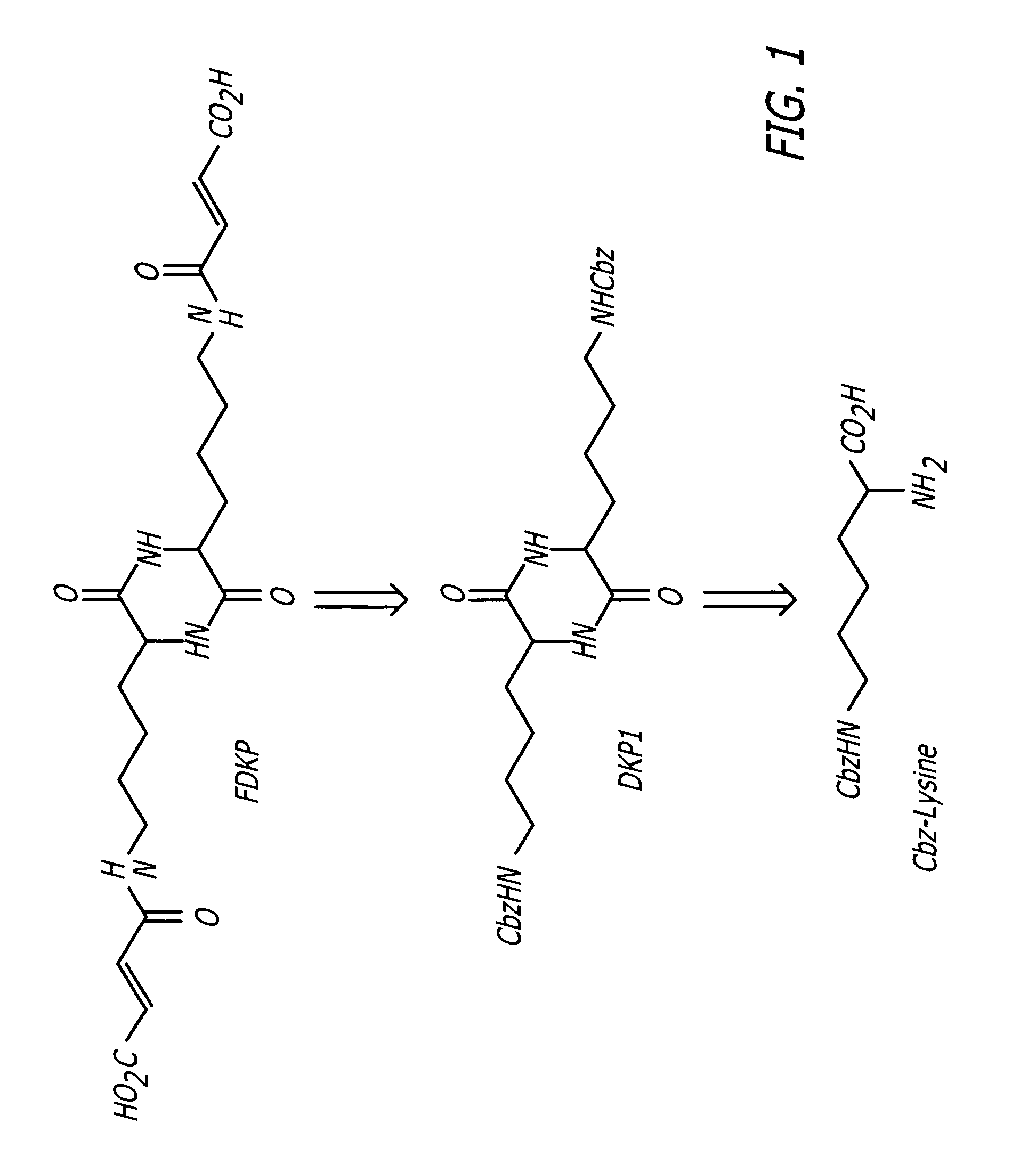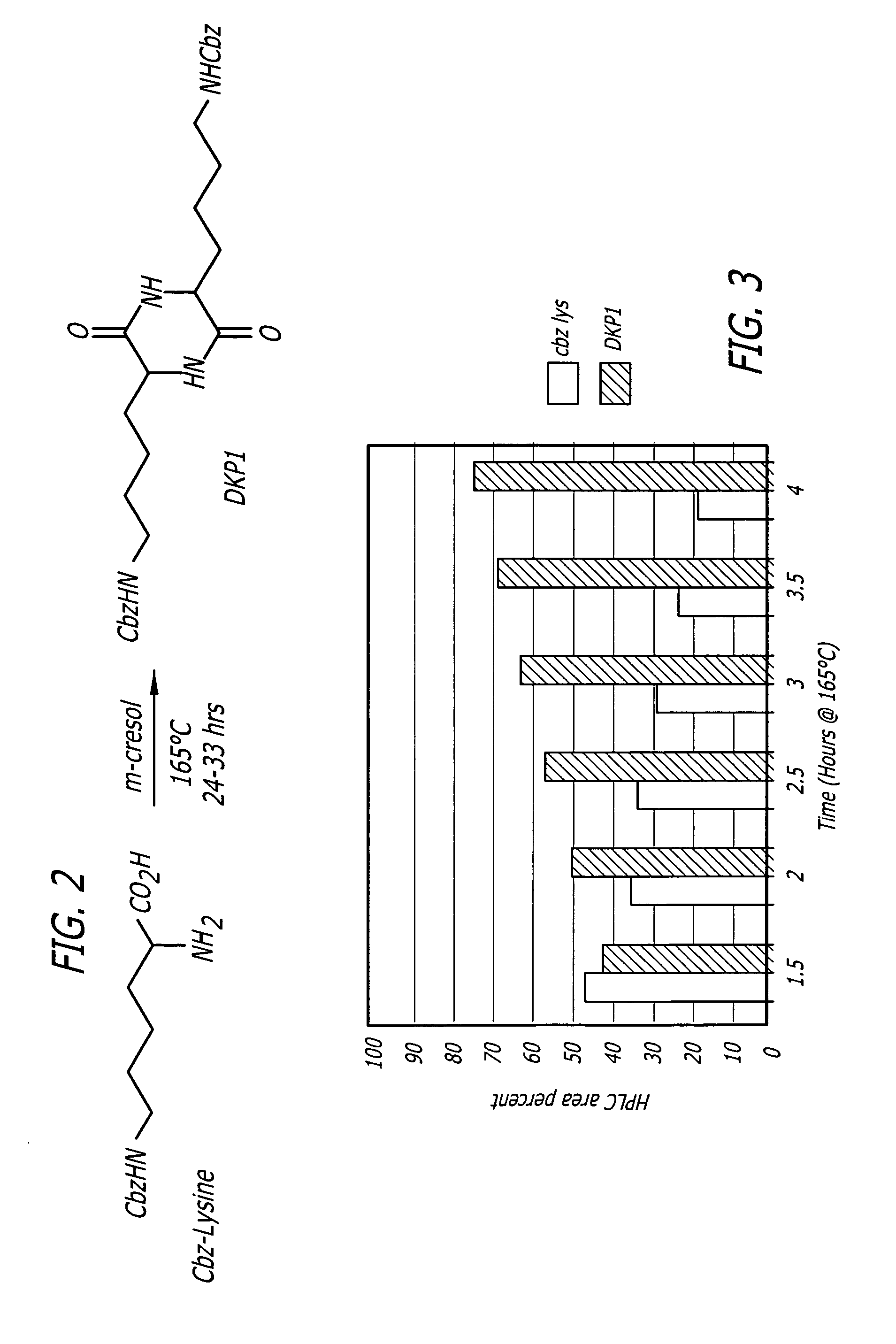Catalysis of diketopiperazine synthesis
a technology of diketopiperazine and catalysis, which is applied in the field of chemical synthesis, can solve the problems of persistent challenge in drug delivery, and achieve the effects of faster reaction times, higher yields and higher yields
- Summary
- Abstract
- Description
- Claims
- Application Information
AI Technical Summary
Benefits of technology
Problems solved by technology
Method used
Image
Examples
example 1
Phosphorus Pentoxide Catalyzed Synthesis of 3,6-bis[4-(N-benzyloxycarbonyl)aminopropyl]-2,5-diketopiperazine (DKP1) I
[0031]
[0032] A 4-neck 1-L, round-bottom flask equipped with a mechanical stirrer, thermocouple temperature readout / controller, nitrogen gas inlet, and short-path distillation apparatus was charged with 100 g of Cbz-ornithine, 7.5 g of phosphorus pentoxide, and 300 mL of m-cresol. The stirrer and nitrogen purge were started. The slurry was heated to 165° C.±5° C. After formation of a complete solution (approximately 30-60 minutes), the mixture was held at 165° C. for an additional 60 minutes. The heating mantle was removed and the solution cooled to 50° C. A quench solution was prepared in a 2000-mL beaker consisting of an 80:20 mixture of methanol:water (1000 mL). The warm reaction solution was poured into the stirring methanol (MeOH) solution and the resulting suspension stirred for 30 minutes. The suspension was filtered through a medium porosity sintered glass fun...
example 2
Phosphorus Pentoxide Catalyzed Synthesis of DKP1 II
[0034] A 1-L round bottom flask equipped with a mechanical stirrer, short-path distillation apparatus, a thermocouple temperature read-out / controller, and a nitrogen inlet was charged with Cbz-L-lysine (100 g), m-cresol (200 g) and phosphorus pentoxide (7.5 g). The reaction mixture was stirred, heated to a target temperature of 165° C., and held at temperature for 1.5 hours. See FIG. 7.
[0035] After completion of the heating period, the reaction solution was allowed to cool to room temperature (22-25° C.) and quenched with a solution of deionized water (100 mL) and MeOH (400 mL). The resulting suspension was stirred for 30-60 minutes and then filtered through a medium porosity sintered glass funnel. The filter cake was washed sequentially with 250 mL MeOH, 2×250 mL deionized water, and 2×250 mL MeOH.
[0036] The wet cake was dried in a vacuum oven at 50° C. The recovered material was analyzed by HPLC and recrystallized from glacial ...
example 3
Optimization of Phosphorus Pentoxide Catalyzed Synthesis of DKP1
[0037] The dehydrative coupling and cyclization of Cbz-L-lysine to form DKP1 was evaluated as a function of reaction heating time and P2O5 charge. Reactions were carried out using 5%, 7.5% or 10% P2O5 (wttwt based on Cbz-L-lysine) with various heating times (Table 2). The data indicated that yield and purity were maximized using 7.5% P2O5.
[0038] Subsequent experiments were designed to identify optimal conditions for the 7.5% phosphorus pentoxide catalyzed conversion of Cbz-L-lysine to DKP1. Additionally, these reactions were monitored for the disappearance of Cbz-L-lysine. FIG. 5 shows data obtained from a study in which the Cbz-L-lysine / cresol / P2O5 (7.5%) reaction mixture was monitored for DKP1 formation for 3 hours. During this time the reaction temperature was maintained at 165° C.±5° C. Aliquots (3 mL) were removed at specified times throughout the reaction, quenched with deionized water / methanol, and the product ...
PUM
| Property | Measurement | Unit |
|---|---|---|
| temperature | aaaaa | aaaaa |
| temperature | aaaaa | aaaaa |
| temperature | aaaaa | aaaaa |
Abstract
Description
Claims
Application Information
 Login to View More
Login to View More - R&D
- Intellectual Property
- Life Sciences
- Materials
- Tech Scout
- Unparalleled Data Quality
- Higher Quality Content
- 60% Fewer Hallucinations
Browse by: Latest US Patents, China's latest patents, Technical Efficacy Thesaurus, Application Domain, Technology Topic, Popular Technical Reports.
© 2025 PatSnap. All rights reserved.Legal|Privacy policy|Modern Slavery Act Transparency Statement|Sitemap|About US| Contact US: help@patsnap.com



